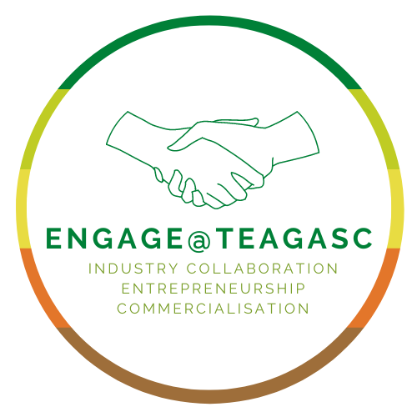Tirlán: Reducing Carbon Footprint
In a pioneering collaboration, Tirlán and Teagasc developed a Life Cycle Assessment (LCA) model to measure the carbon footprint of Irish grains.
Case Highlights
“The results for Irish grain shown in the Life Cycle Analysis are a strong endorsement of the sector’s sustainability credentials and highlight the important role of Irish grains within the agricultural sector and along the value chain.”
– John Kealy, Tirlán Head of Grains
-
Challenge: Measuring Carbon Footprint of Irish Grains
-
Solution: Developing LCA Model
-
Impact: Proving Lower Carbon Footprint


Challenge: Measuring Carbon Footprint of Irish Grains
Tirlán, a leading Irish agricultural co-op, faced the challenge of accurately measuring and demonstrating the carbon footprint of their grain production. Existing global models were not representative of the Irish tillage sector, making it difficult to provide reliable data on the carbon footprint of Irish grains. This gap hindered Tirlán’s ability to showcase the sustainability of their grains and leverage this as a competitive advantage in the market.

Solution: Developing LCA Model
Teagasc collaborated with Tirlán to develop a bespoke LCA model tailored specifically for the Irish grain sector. Teagasc’s expertise in agricultural research was pivotal in creating this model, which adhered to international standards and included emissions from both on-farm and off-farm activities, such as fertiliser manufacturing. Teagasc supported Tirlán in the data collection process, which gathered comprehensive information from 48 Tirlán grain suppliers, covering 11,500 hectares of land. This data set included details on soil type, cultivations, fuel use, fertilisation, crop yields, and straw management, ensuring the model’s accuracy and relevance.

Impact: Proving Lower Carbon Footprint
The research, unveiled at the Tirlán Quality Grain Awards, demonstrated that the carbon footprint of Tirlán’s oats, wheat, and barley was among the lowest in the world. For instance, Tirlán’s oats had a gross carbon footprint of 207kg CO2/t, which is significantly lower than figures from other grain-producing regions. Incorporating straw into the soil further reduced the carbon footprint, bringing some crops close to net-zero emissions. These findings, facilitated by Teagasc’s innovative LCA model, support the marketing and sale of Tirlán produce based on its strong sustainability credentials. This collaboration not only validates the low carbon footprint of Tirlán’s grains but also positions them strongly in the global market, emphasising their commitment to environmental sustainability and providing a significant competitive edge. Teagasc’s role was crucial in providing the scientific expertise and research capabilities that enabled Tirlán to achieve these outstanding results.
Next Steps…
Following this pilot phase with a group of tillage farmers, the LCA methodology will be deployed in AgNav to enable wider usage, providing a scalable tool for the broader agricultural community. The deployment of the tillage model in AgNav will allow the carbon footprint of mixed farms (dairy/beef/tillage) to be calculated. This will provide further information for the Signpost climate advisors to work with farmers on the ground to help reduce emissions further.


